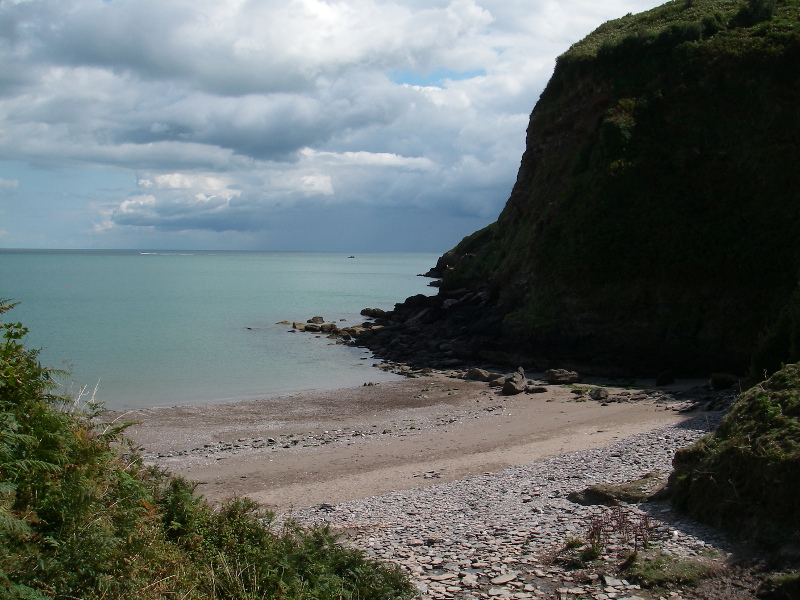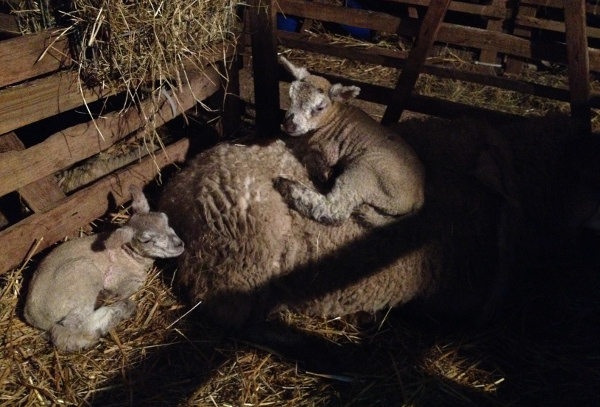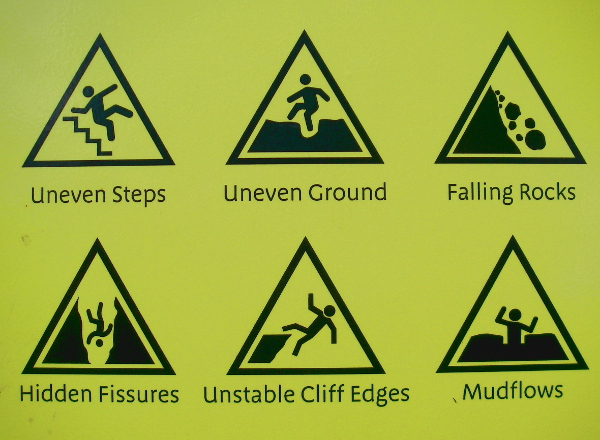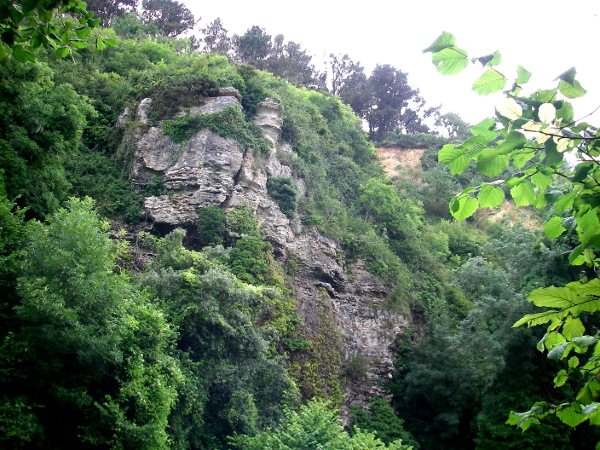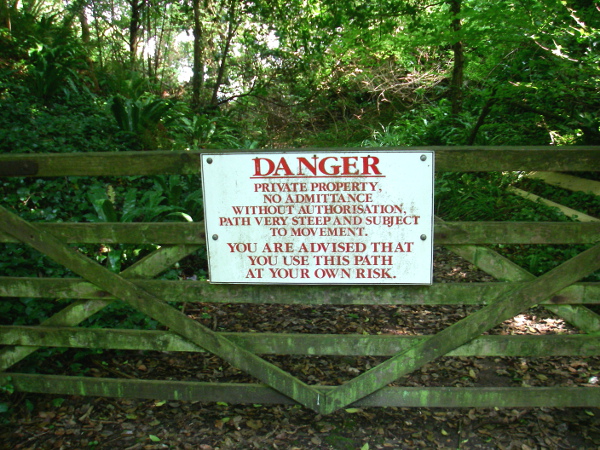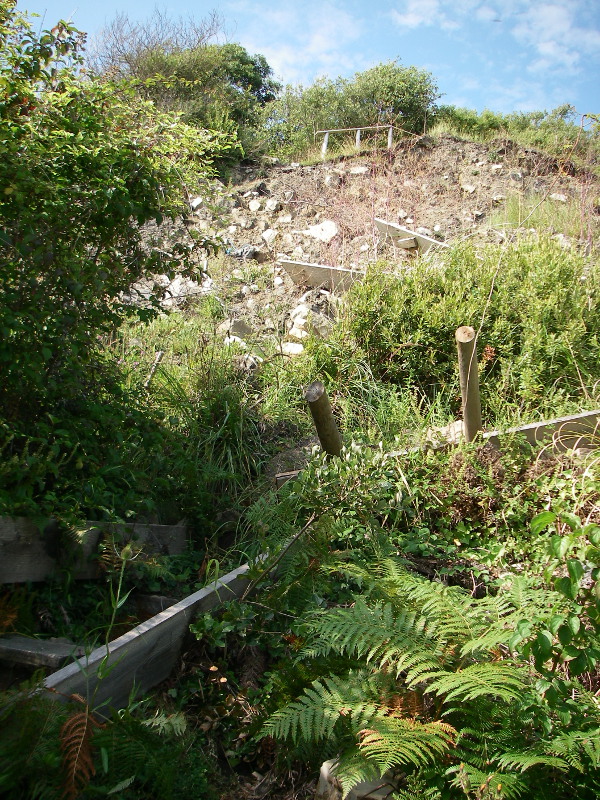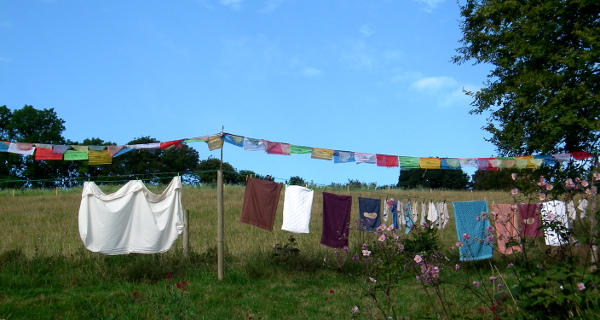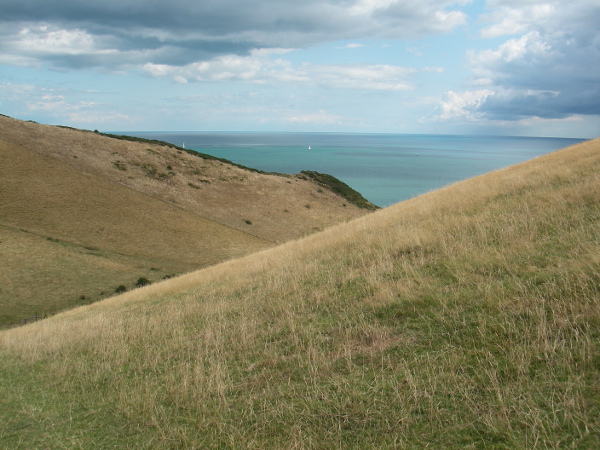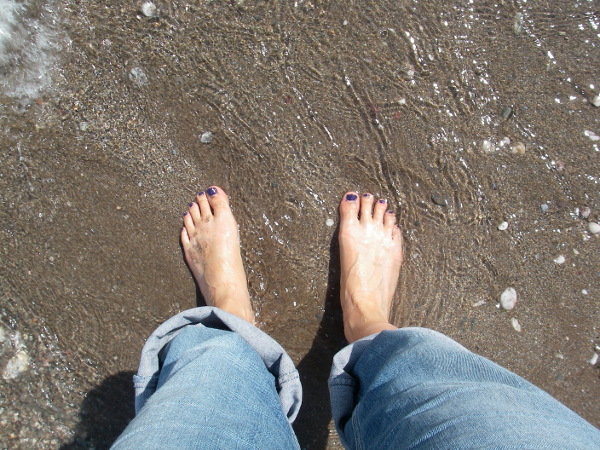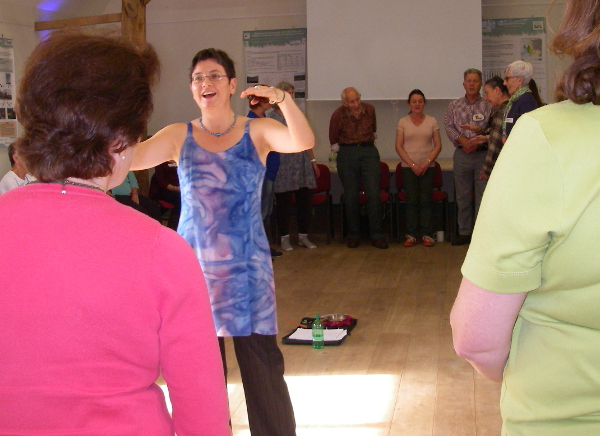It’s been quite a while since I last updated this blog (life having been somewhat hectic). But as midwinter approaches and the cold and dark are really strengthening their hold, reflecting back on my summer and autumn adventures is a nice way to pass the time.
As my environmental education work is at its busiest in school term time (particularly the spring and summer terms), usually by the time the summer holidays finally arrive I am more than ready for a break and this year was no exception. Which is not to say that I didn’t have some good times teaching visiting school groups at Rushall Organic Farm, as well. 2014 has been a very busy year at the farm, with more schoolchildren than ever visiting to spend the day learning about farming, habitats, wildlife, soils and rivers. Starting of course in early spring with lambing.
Despite a very wet winter which created havoc for British farmers everywhere, lambing itself went well at Rushall this year: a welcome change after the bitterly cold spring of 2013 when we lost 15% of our lambs due to the cold weather.
Once lambing was over we were still very busy with school visits, including the residential camps where children come and stay in tents at the farm for several days. I really enjoy working with the kids on the camps: you get to know the children and see them develop over the week as they try their hand at activities ranging from den building and camp fires to sheep herding and river dipping. Many of them have never done adventurous outdoor things before and it’s fantastic to see them expanding their boundaries. The teachers often tell us that the Rushall Farm trip is a highlight in many of their pupils’ lives… It’s hard not to be moved by this. It makes the long hours and busy summer term truly worthwhile.
It’s been a year of big change at Rushall Farm, with longstanding farm manager John retiring this autumn and former shepherd Steve stepping up as our new farm manager. The farm will continue to have sheep and cattle and some arable land, including the areas that are managed under the Higher Level Stewardship (HLS) farming scheme to support the wildlife that is such a vital part of our ecosystems and landscapes. Both the HLS and the fact that Rushall is organically managed means that the farm is rich in wildlife… I feel very lucky to work on such a special site. Walking through one of our arable fields this summer with groups of children, we were surrounded by poppies. Such an beautiful sight, and a rare one these days.
Towards the end of the school term when I had a bit more liberty, I lost no time in escaping to the seaside (my usual default getaway) for a long weekend in Lyme Regis. This part of western Dorset, named the Jurassic Coast for its wealth of fossils, contains the Undercliffs National Nature Reserve. This 7-mile stretch of rugged and shifting landscape between Lyme Regis and Axmouth is one of my favourite walks, although it can be challenging in places… as this cheerful warning sign at its eastern end suggests.
The coastal path which traverses the Undercliff is challenging in places: particularly so this summer, because a substantial landslip back in the spring made a section of the route impassable. (There is a detour inland if you want to continue west past Culverhole Point, but it looked a tedious trek so rather than bothering with it I just walked a few miles along the section that can still be safely walked.) Even this path is not for the faint-hearted, however. While I was enjoying the view at the start of the path I was overtaken by a large group of walkers… only to meet them returning later on, with complaints of “The path gets terrible a bit further on – we kept falling over.” I like a challenge, though, so I kept on going. The scenery and amazing wildlife made it worth it: this National Nature Reserve is an absolute jewel.
As it was a fairly muggy day with thunder occasionally rumbling overhead, I didn’t meet many other walkers. In the humid heat, surrounded by dense woodland and ferns, it felt about as close to a rainforest experience as you can get in Britain. Every so often though you come upon reminders that although this is a wild landscape, it has also been a settled one: ruins crumbling away amongst the undergrowth, abandoned houses or farm buildings dating from before the great 1839 Bindon Landslip when a huge slab of land known locally as Goat Island simply detached itself one night and rumbled seawards.
One of the quirks of the Undercliff is that although the path skirts the coast and you can often hear and sometimes view the sea from it, actually descending down the unstable cliff face onto the beach is not an easy task. There are stern signs that threaten all manner of dire fates should you try to do so. So you really, really shouldn’t. It’s naughty and wicked, and the Landslip Goblins will swallow you whole if you do it. (Probably.)
Of course not being a naughty wicked trespasser (perish the thought), I skirted the Landslip Goblins and skipped down a safer route. Once on the beach I eventually reached a spot where you can look up to see where the forces of modern coastal path engineering were confronted by the playful forces of Mother Nature… And have been utterfly vanquished. The winter rains have made the Undercliff even more lively than usual, and the last few hundred yards of that particular path resemble not so much a route as a demolition site. “Subject to movement” is a bit of an understatement: in the UK we often forget that the ground under our feet is a dynamic thing, but seeing landslips like this one remind you of the power of natural forces. Score: Mother Nature 1, Feeble Humans nil. The Landslip Goblins will get you if you dare to venture where you shouldn’t…
Keeping a weather eye on the cliff to make sure that no landslip was currently about to manifest itself, I enjoyed a few hours of leisurely beach-combing. It was worth the effort: by now the thunderstorms had rumbled off elsewhere and it turned into a sunny afternoon. I had pretty much the whole beach to myself (except for a solitary couple who had evidently braved the Path Of Doom and then pottered off eastwards to find their own bit of beach). Left to myself in one of the most gorgeous bits of the Jurassic Coast, I rewarded my efforts with a picnic and a spot of beach art, creating a yin-yang symbol from pebbles and seaweed. Not exactly Andy Goldsworthy, but I enjoyed doing it anyway.
 In early August I took some time away from west Berkshire to go to Unicorn Voice Camp, an annual week-long singing camp on the Somerset-Wiltshire border. It was my third Voice Camp and as ever an utter treat for the ears, the voice and the soul: around 400 people gathering together to sing and teach music from a wealth of cultures. One evening a young chap called Matt played his hang for some of us in the big yurt onsite, and it was simply bliss. (If you don’t know what a hang is, check out this video on YouTube.) Unicorn campers (as the name probably suggests) are a creative and mellow lot, I always come away with my energies recharged and a heart full of gorgeous harmonies that I can share with the Sing The World choir that I co-lead in Newbury.
In early August I took some time away from west Berkshire to go to Unicorn Voice Camp, an annual week-long singing camp on the Somerset-Wiltshire border. It was my third Voice Camp and as ever an utter treat for the ears, the voice and the soul: around 400 people gathering together to sing and teach music from a wealth of cultures. One evening a young chap called Matt played his hang for some of us in the big yurt onsite, and it was simply bliss. (If you don’t know what a hang is, check out this video on YouTube.) Unicorn campers (as the name probably suggests) are a creative and mellow lot, I always come away with my energies recharged and a heart full of gorgeous harmonies that I can share with the Sing The World choir that I co-lead in Newbury.The emphasis at the camp is on authenticity, support and celebration of all things creative and spiritual. There is a also a stonking cabaret (LMAO, as I believe the young folks say), a cafe that serves divine cake, and shared meals round your campfire each night. There is singing absolutely everywhere: barbershop harmony, nightingale-voiced teenagers dueting with guitarists, medieval choral music, African melodies and rhythms, Romany songs, gospel, folk, jazz, and all kinds of stunning original harmony compositions shared by the many talented singers and teachers who go to Voice Camp. It’s a very special musical gathering and long may it continue.
Of course I didn’t spend the whole summer playing: I was also running activity sessions for families at Five A Day Market Garden in Englefield. These half-day sessions were popular and I spent several mornings and afternoons outdoors with kids and their parents, discovering minibeasts and pond life and making all manner of amazing eco art creations… Like this lovely clay and sage leaf snake made by one young lad!
When funding allows it, I run these family sessions in most school holidays. We had some pumpkin carving workshops in the October half term which were also hugely popular, and another family workshop (Crafty Christmas) is scheduled for 20th December. It’s great to see all ages of children having fun and getting messy together, and the parents seem to enjoy it as much as the kids! We certainly had some awesome pumpkin lanterns carved.
Towards the end of August I had one more treat: or more properly, RE-treat: a week away at the Barn Buddhist retreat centre, at The Sharpham Trust near Totnes in Devon. Although I’ve been meditating now for several years I had never been on a retreat before and I wasn’t sure how it would go. Rather wonderfully, as it turned out.
Rising at 6.45am and spending two hours or more in meditation every day may not be everyone’s idea of a good time, but you soon settle into it. The retreats at the Barn are based on Buddhist traditions but are non-denominational: anyone can stay, for a week or for longer. Time is divided between mindful tasks (such as working in the organic veg garden and woodland), meditation, and afternoons free for personal practice or simply walking in the surrounding Devon countryside. Silence is held from 9pm each evening to 9am the following morning and there is also one day of complete silence. What impressed itself on me was the absolute peacefulness of the place: both the Barn itself, and its setting on a hillside overlooking the River Dart.
People go on retreats for different reasons. I was basically there to see how it felt, removing myself from the pressures of work and busy everyday life; and also to try to deepen my meditation practice. What I found after a few days of mindfulness and quiet was that so much of what I think is necessary in my life (internet, books, radio, emails) actually isn’t. Having something purposeful to do; taking time to appreciate nature and peace; connecting with other people; savouring every moment of life mindfully; these are more than enough.
Buddhism is a spiritual path sometimes perceived as being rather detached from the world, somewhat devoid of emotion or passion. I find the contrary: it promotes meaningful and intense connection with all of the universe, including the people around us, and an approach to life based on love, kindness, gratitude and patience. (And with a great deal of humour, as anyone who has read Zen Flesh, Zen Bones will know.) I’m by no means an expert but I’m finding it a rewarding exploration. And my retreat at the Barn was a life-changing event, on several levels. I’ve yet to completely work out what seeds were sowed in me while I was there, but they’re definitely germinating.
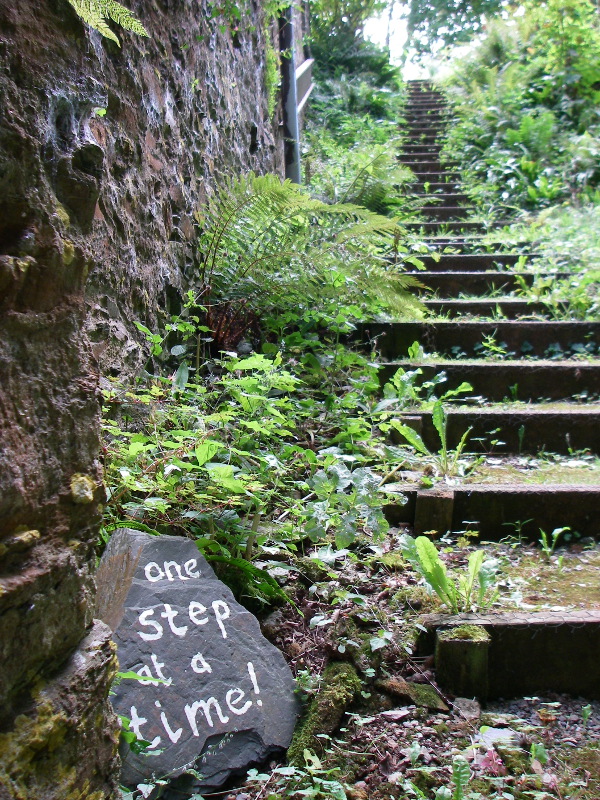 The most difficult thing about going on retreat was leaving: adjusting back to the ‘normal’ world is a process that takes a little while. I softened the blow by day-tripping Scabbacombe Sands, a little cove near Dartmouth. You can only get down to this lovely beach by walking (a good thirty minutes or so) and the path is pretty steep, so that weeds out the throngs of day-trippers.
The most difficult thing about going on retreat was leaving: adjusting back to the ‘normal’ world is a process that takes a little while. I softened the blow by day-tripping Scabbacombe Sands, a little cove near Dartmouth. You can only get down to this lovely beach by walking (a good thirty minutes or so) and the path is pretty steep, so that weeds out the throngs of day-trippers.Once I got down to sea level I treated myself to a picnic: after leaving the Barn retreat I popped into Totnes to buy picnic supplies, which was entertaining. Totnes is crammed with alternative folks of all sorts (popular rumour has it that the town’s sign once had ‘Totnes: twinned with Narnia’ graffitied onto it) so ‘artisanal’ foods are readily available. Not being made of money I settled for a massive slab of olive bread, some nommy local-grown tomatoes and a pot of wonderfully garlicky guacamole. Nicely washed down with a flask of lapsang souchong tea I’d made myself, before leaving the Barn. Not exactly traditional seaside holiday fare but it hit the spot all right.
I could’ve quite happily stayed until nightfall at Scabbacombe. The sun shone, I paddled in the sea, and all was well with the world. It probably helped that I’d been on a retreat for the past week as well: daily mindfulness practice had switched on all my senses, and for hours I happily sat or pottered about on this beautiful little beach. (Note in the photo below the purple nail polish – a present from a friend at Voice Camp!)
It was good to have some quality get-aways during the summer, after all the hecticness of teaching. Once the schools started back again in September I was busy again, although getting hit by a succession of viruses was somewhat challenging… Especially laryngitis: not a great thing to succumb to when your work is teaching and singing! Fortunately by mid-October I had got enough voice back to run my Songs From The Heart singing workshop, at the lovely converted barn at Elm Farm Organic Research Centre just outside Newbury. It was a fabulous day, with around forty people coming along to sing in harmony together. I was able to share some of the lovely songs I’d learned at Voice Camp, and the feedback from participants at the end of the day was really heart-warming.
I’m starting to be able to give more time to my singing work, which is wonderful: I would like to run more singing workshops for groups. At Voice Camp I went to a series of sessions led by the super-talented and lovely Susie Ro Prater, which got me thinking about how I can compose more of my own a capella harmony songs. And recently I also had an opportunity to sing with a jazz guitarist at Newbury Unplugged (our local monthly open mic night at Ace Space), so music-wise things are expanding for me at the moment. Long may this state of affairs continue.
As winter deepens, my outdoor teaching work has come to its usual seasonal standstill, so all being well I should have some time to spend on developing my singing and other creative pursuits. Sing The World’s ‘peformance group’, Wacapella, is performing as part of the ‘1,000 Voices‘ winter singing event in Newbury on 11th December, so I’m looking forward to that. And on clear frosty days I’ll be getting out and about in the countryside, going for walks and getting some much-needed winter sunshine. During the autumn I carried out some dormouse surveys for local wildlife trust BBOWT, and during one woodland survey came across an absolutely stunning frog. I hope to see lots more wildlife as I ramble across the downs and valleys over the next few weeks. Wishing you all a healthy, peaceful and happy festive season!

